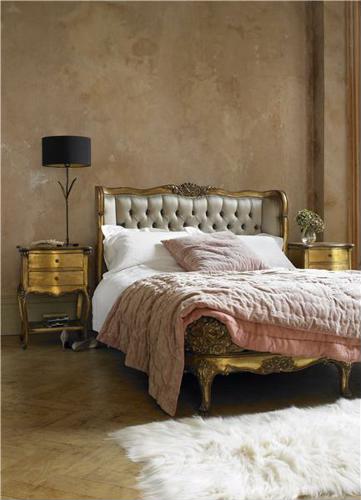
Your bedroom should reflect you and your interests. Whether you're decorating a new home or looking to update your personal space, it's not easy to achieve a look that is "you" while still maintaining function and beauty. When trying to make a room your own, it's tempting to clutter surfaces with memorabilia. On the other hand, making your room look like it came out of a design magazine can cause it to lose originality. Here are some tips on how to find a balance.
Find inspiration
Working from a magazine or blog can be helpful in terms of keeping a theme and creating a room with features that have been approved by an interior decorator. But by copying everything to a "T", you lose originality. Find a few examples of rooms that you like from friend's houses, magazines, books or blogs. Look for a common theme - style, color or textures. Make a note of the similarities, and also of any feature that you fell in love with and strive to use these elements when decorating.
Style
Finding the style that appeals most to you will be part personality and part lifestyle. For example, someone who loves to keep things tidy and clean would probably love a minimalist look in the bedroom that includes lots of storage, as few pieces as possible and only a couple frames or knick-knacks on the bureaus. This doesn't mean boring - the furniture itself can be opulent in a minimalist way if it sticks to a small selection of colors.
If you're less of a cleanliness enthusiast and more of an artsy type, your ideal bedroom might be more contemporary. An imaginative bedroom might incorporate a wide array of bright colors and decorations, such as furniture found in antique shops and figurines collected with traveling. A creative person may have the sort of room that inspiration can be drawn from. No matter what style you gravitate towards, make sure it suits your life and your tastes. We have some gorgeous rugs from Momeni in a variety of styles.
Color
When it comes to color, follow your gut, but with moderation. Fire engine red is great, but a room featuring it will knock your socks off every time you walk through the door. Use muted hues of your favorite color throughout your bedroom to keep it calm, or use the saturated version in accent pieces in an otherwise neutral room. Keeping a basic color scheme can help you to achieve a professional design look in your home, but don't be discouraged from utilizing an accent wall in the aforementioned fire engine red. Just plan it out carefully so you don't feel the need to paint it over in a few weeks.
Texture
Texture is an underrated way to inject your own personality into a room. Notice the fabrics in your room - are the window treatments wood blinds or roman shades? Is there a plush rug or hardwood floors? Are your pieces perfectly polished, or is your furniture rough? Smooth surfaces tend to make a room more sterile looking than surfaces that are imperfect. Texture can be added to walls with paneling or wall hangings. However, this can make a space look smaller, so it's not advisable to panel or put tapestries up in a cozier space. Texture and pattern are easily mixed up, and can sometimes be interchangeable. Think about the amount of pattern you're putting into a room and the effect that it has on the style. You can mix and match different textures to find a balance that suits you.

